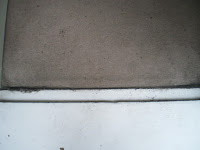Area history
 | What is now the London Borough of Ealing was once forest and countryside. There were Stone Age people here, but no evidence of fixed settlements until the Saxons arrived in, perhaps, the sixth and seventh centuries and the county of Middlesex was formed. At the time of the Domesday Book, in 1086, the first written evidence appears for the manors of Greenford and Hanwell. Southall, Acton and Ealing were parts of larger manors and so not recorded individually.
|
In the sixteenth and seventeenth centuries, the basic unit of local government was the parish. Ealing, Hanwell, Acton and Southall all lay on the main road from London to Oxford, and travellers passed through these villages frequently. Greenford, Perivale and Northolt, were rather off the beaten track and remained small villages until after the First World War. But even Ealing was small, with only 428 residents in 1598.
Life for most people revolved around agriculture. There were also a few craftsmen and traders, but little industry. Commerce was stimulated by the Grand Junction Canal, which cut through Southall, Greenford and Perivale at the end of the eighteenth century. The coming of the railways in 1838 had little initial impact, as the small villages grew into small towns as population slowly rose.
However, by the end of the nineteenth century, improved communications, in the form of trams, buses and trains had made access to and from London so much easier. Many residents worked in London, travelling there and back each day. Ealing became a desirable residential centre, whilst Acton and Southall became hives of large-scale industry. Greenford, Perivale and Northolt remained small agriculture villages. Less than 100 people lived in Perivale in 1901.
After the First World War, Ealing, which became a borough in 1901 (the first in Middlesex) began to expand. In 1926, Hanwell, Greenford and Perivale became incorporated into Ealing and these were joined by Northolt in 1928. Acton and Southall became boroughs in their own right in 1921 and 1936, respectively. The expansion of industry in Greenford and Perivale was spectacular in the 1920s and 1930s, helped by the building of the Western Avenue in the 1930s, and more industries came to Acton and Southall.
Fortunately the bombing of World War Two was less severe here than elsewhere in London. After the War, the remaining rural portion of Ealing and Northolt was built upon as council houses were built in order to house people. Another key feature of the post War period was the large-scale immigration of people from India, Pakistan, Poland, the Caribbean and many other countries. In 1965, the old boroughs of Ealing, Acton and Southall were abolished and they were merged into one new local authority the London Borough of Ealing.
























